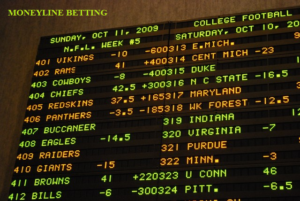
Think that team has a 50/50 shot at winning? Then you have a line with some value. After going through the formula, our implied probability is 41.67 percent. The formula for underdogs is 100 / (Positive Odds + 100) x 100. If you feel that team has a 58.33 percent chance or better of winning the game, then you find value in that bet. Once we drop the negative sign and plug the number in, we wind up with a 58.33 implied probability. The formula for a favourite is: Negative Odds / (Negative Odds + 100) x 100. Let’s say a team has moneyline odds of-140. But there’s still a simple way to convert betting odds into a percentage and help decide if a wager is worth making. You may not have access to the the same analytics the professionals do. Once moneylines reach this point, look toward the spread if you find yourself leaning toward a favourite. A team that is -300 requires risking three times what you stand to win.Įven though moneyline favourites are seemingly safe bets, they can ruin your bankroll if they don’t come through. When single-game betting in Canada, backing a heavy favourite can mean taking on huge risk. That is an example of reverse line movement, which could mean the most respected bettors (usually professionals) back the other side. But rather than the line growing, the movement goes the other way and it becomes -140 or -130 instead. Combined, these factors could reveal reverse line movement, which is an indicator that the public is worth fading.įor example, say a team is -150 and has public support. Two things that bettors should know is how a line has changed and which side the public is on. Track line movement & betting percentages If you’re looking for a few strategies to apply when placing single-game moneyline bets, keep the following in mind.

But they will be listed in another section, likely under props. Many sportsbooks will also have markets for regulation time. Unless otherwise stated, moneylines include all forms of overtime. To account for the disparity in quality, bettors are required to risk more to wager on the favourites than the underdogs. In sports, teams are not evenly matched, which is why the two sides have different moneylines. If you’re calculating odds for a lesser amount, that’s $10 to win $25 or $50 to win $125. Selecting underdogs means risking $100 to win the amount stated in the moneyline, so betting on Ottawa in this situation means winning $250 in profit on a $100 bet. That translates to $150 risk for $50 in profit, or $30 for every $10. Thus, a moneyline bet on the Maple Leafs requires a $300 stake to win $100. To easily calculate how much you stand to win or lose on these bets, it helps to look at the moneyline relative to the number 100.īetting favourites on the moneyline means risking whatever the line says to win $100. The underdog will have a positive line, and the Senators (+250) receive that honour. In this game, that is the Maple Leafs (-300). The favourite will carry a negative line. Let’s take a look at an example from Caesars Sportsbook, a brand well known to many Canadian bettors.įirst, we need to identify the favourite and the underdog. All that’s needed is the team you select to be the winner, and the profits are yours. Betting the moneyline translates to picking which team will win the game. There is nothing simpler for a new bettor than moneylines. To help new bettors prepare for it, here’s how the two most popular bets in sports-the moneyline and the point spread- work.


Rather than multiple sides included in every bet, each one is graded on its own. In short, you have a much better chance of turning a profit by placing single-game bets or props. While parlays have the potential to be profitable, they’re extremely difficult bets to win with any consistency.

There are many advantages to single-game betting (as opposed to having access only to parlay bets).


 0 kommentar(er)
0 kommentar(er)
